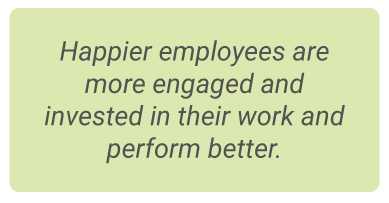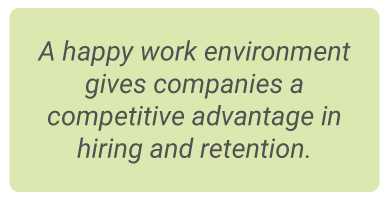 ×
×
 ☰
☰
The scent of rotten egg tickled my nose and could that be a mustard stain on the seat next to me? The putrid scent and state of the interior of the car was not where the experience ended.
As the door clicked shut behind me, Stan, the driver, told me how terrible working for a rideshare company was; the pay, the benefits, and even having to talk to customers all day. Stan repeatedly said “This job is making my life miserable.” I don’t know if he even noticed as I said ‘thank you’ and stepped out of the car.
At dinner, I felt the negativity from my drive creep into the conversation. I tried to shake it off and started to prepare mentally for another terrible ride home. When the time came, another black car appeared. Was this the same car?
I opened the door with dread. Instead, I was greeted warmly by the driver, Rob, and he handed me a phone cord so I could choose music if I wanted to. Snacks and water hung on the back of the front seats, and a disco ball flooded the car with light.
Rob asked questions about my day and work. Without prompting, he then shared his deep love for his work, his company, and all the benefits of working with rideshare. He got teary-eyed when he mentioned he felt recognized, appreciated, and had a sense of purpose. Rob realized he had the power to turn someone’s day around in a positive way and felt like he mattered. Rob was happy, and at the end of my ride, I was happy too.
Stan and Rob work for the same company, have the same job, and even drive similar cars. They both talked about benefits and their experiences on the job. Despite their similarities- their perceptions, satisfaction, and the interiors of their cars were completely different. The contrast was palpable to me, their customer, and I probably was not the only one to experience it.
There were many differences between these two employees, but the one they both expressed was their level of happiness. The difference showed most was their level of investment.
The correlation between employee happiness and customer experience is intuitively connected for many customer-facing roles. Some organizations fail to realize customer experience can be influenced by employee sentiment across all levels and roles within an organization.
Culture, leadership development, and employee sentiment are too often seen only as an extra expense. I’ve heard leaders say things like “We’d like to help build a culture of recognition… if there is room in the budget” Then, that space never comes.

Employee happiness is more than a “perk” or “nice”. Employee happiness is an essential step for organizational success. Employees are your number one asset, and they are worth prioritizing and investing in.
Most companies that succeed long-term understand and value their employees. When employees are valued, organizations profit in a variety of ways.
Employees, especially those in customer-facing roles, are an extension of your brand. Customers start to identify companies with the experience they are left with by the people who work there. In turn, this drives more purchase decisions. This perception can create or destroy your brand and reputation, so it’s not something you should take lightly.
The Harvard Business Review article ‘Putting the Service-Profit Chain to Work’ describes a link between employee and customer loyalty. “Profit and growth are stimulated primarily by customer loyalty. Loyalty is a direct result of customer satisfaction. Satisfaction is largely influenced by the value of services provided to customers. Value is created by satisfied, loyal, and productive employees.”
Another Harvard Business Review article (titled ‘The Key to Happy Customers? Happy Employees’) estimated the impact of Glassdoor employee reviews on the American Customer Satisfaction Index (ACSI). The research found “There is a strong statistical link between employee well-being reported and customer satisfaction. A happier workforce is clearly associated with companies’ ability to deliver better customer satisfaction”

When customers are satisfied and find success with a company, they are more likely to increase their investment. Customers that become advocates are more likely to recommend products/services to others, only further propelling organizational growth.
Perks like commuter benefits and ping pong tables are buzz benefits and might be beneficial in attracting new employees, but will not keep employees satisfied long-term. And employee turnover is EXPENSIVE.
Morale and productivity often take a dip when an employee leaves. Other employees stretch themselves to compensate for one less person while trying to balance their own assignments.
There’s an economic value of employees over time. Initially, employees start at a cost to an organization. Over time, new employees find their place and bring value. The goal is to Time To Value (TTV) as soon as possible. It’s logical and makes economic sense to retain employees and maximize their value to the company.

A happy work environment gives companies a competitive advantage in hiring and retention.
Recruiting, rehiring, and training employees are also time-intensive and expensive. In 2016, the Society for Human Resource Management’s Human Capital Benchmarking Report found an average position takes 42 days to fill, with an average cost per hire of $4,129. Another study found to replace a salaried employee can average a cost of 6 to 9 months’ salary.
Unhappy employees leave organizations. When employees are not happy, organizations do not thrive long-term. There are large long-term costs in non-investment. Happy employees delight customers, attract talent, increase productivity, and grow profit. When strategically planning for long-term business growth, invest in your top asset—your people.
Source: Motivosity